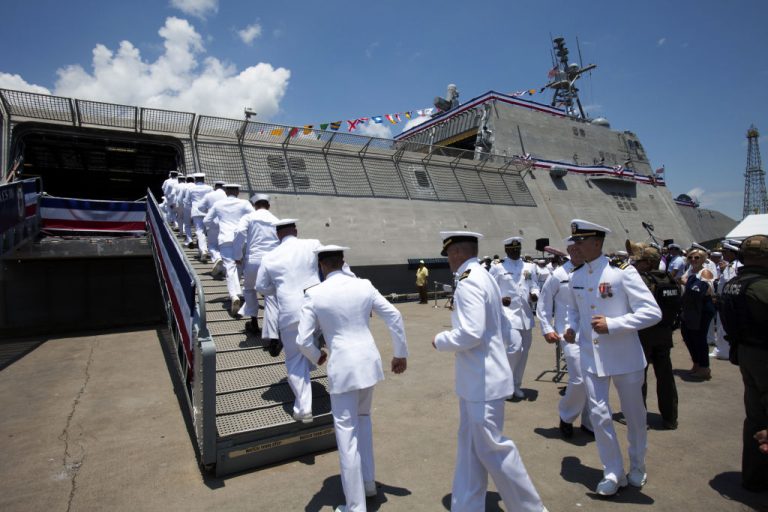On Dec. 4, the Chinese military reported that the USS Gabrielle Giffords — an American warship — had “illegally entered” its territorial waters near the Second Thomas Shoal in the South China Sea. The area, which is claimed by both China and the Philippines among others, has become a focal point of regional disputes.
In response, the Southern Theater Command of China’s military deployed a naval force to follow and monitor the movements of the combat ship, and accused the U.S. of “escalating tensions” in the region.
A spokesperson from the Southern Theater Command denounced the American warship as an infringement on China’s sovereignty and safety, claiming that these actions disrupt regional peace, stability, and violate international laws.
“The U.S. seriously undermined regional peace and stability,” the spokesperson was quoted as saying in a statement. The spokesperson added the U.S. ship was being “closely monitored” and that China’s “troops in the theater are on high alert at all times to resolutely defend national sovereignty.”
Business as usual?
However, the U.S. Navy maintains that the USS Giffords was “conducting routine operations” in international waters in accordance with international law. Kristina Wiedemann, deputy public affairs officer, told NBC News that the longstanding presence of the U.S. 7th Fleet in these waters is “completely normal,” and asserted Washington’s commitment to maintaining a free and open Indo-Pacific region.
Success
You are now signed up for our newsletter
Success
Check your email to complete sign up
“Every day, the U.S. 7th Fleet operates in the South China Sea, as they have for decades,” said Wiedemann in an emailed statement. “These operations demonstrate we are committed to upholding a free and open Indo-Pacific region.”
“We will not be deterred from continuing to work alongside our allies and partners in support of our shared vision for a free and open Indo-pacific,” the U.S. Navy added in a statement.
‘No legal basis’
The South China Sea — a crucial shipping lane rich in natural resources — has been the subject of various territorial claims by its surrounding nations, including Taiwan, Brunei, Malaysia, the Philippines, and Vietnam. The overlapping claims have led to numerous disputes and warnings from the Chinese government despite a 2016 ruling by an international tribunal claiming that China’s expansive claims in the South China Sea have “no legal basis.”
On Aug. 25th, defense leaders from the Philippines and Australia came to an agreement to conduct joint patrols in the South China Sea. The decision came as a strategic response to the escalating tensions and growing assertiveness of China in the region. The collaboration aims to “strengthen security over vital sea lanes” and present a united front against challenges posed by the Chinese Communist Party (CCP).
MORE ON THIS: Ties Between Philippines and Australia Tighten as Joint Patrols Announced in South China Sea
Both defense chiefs concurred that the “coordinated patrols” are essential for safeguarding critical maritime routes and protecting areas of shared interest.
“We committed to expanding some of our bilateral activities in the future to include other countries committed to sustaining peace and security in our region,” said Defense Secretaries Gilberto Teodoro Jr. of the Philippines and Richard Marles of Australia in a joint declaration.
Recently, tensions have been on the rise due to confrontations between China and the Philippines — a U.S. treaty ally. The confrontations center around the Second Thomas Shoal, which, according to the 2016 ruling, lies within the Philippines’ exclusive economic zone.
RELATED: China Considers Renewing Boeing 737 Max Purchases Amid High-Stakes APEC Summit
However, China’s continued efforts to block the Philippines from resupplying a military outpost — a rusting warship grounded intentionally by the Philippine government in 1999 — have only added to the simmering tensions in the region.
In a separate incident that took place on Dec. 2, the Philippines dispatched coast guard vessels to another reef after alleging that China was “swarming the area” with over 135 boats. The Chinese Foreign Ministry responded by asserting that the reef belongs to China and that the practice of protecting Chinese fishing vessels is “reasonable and lawful.”


















